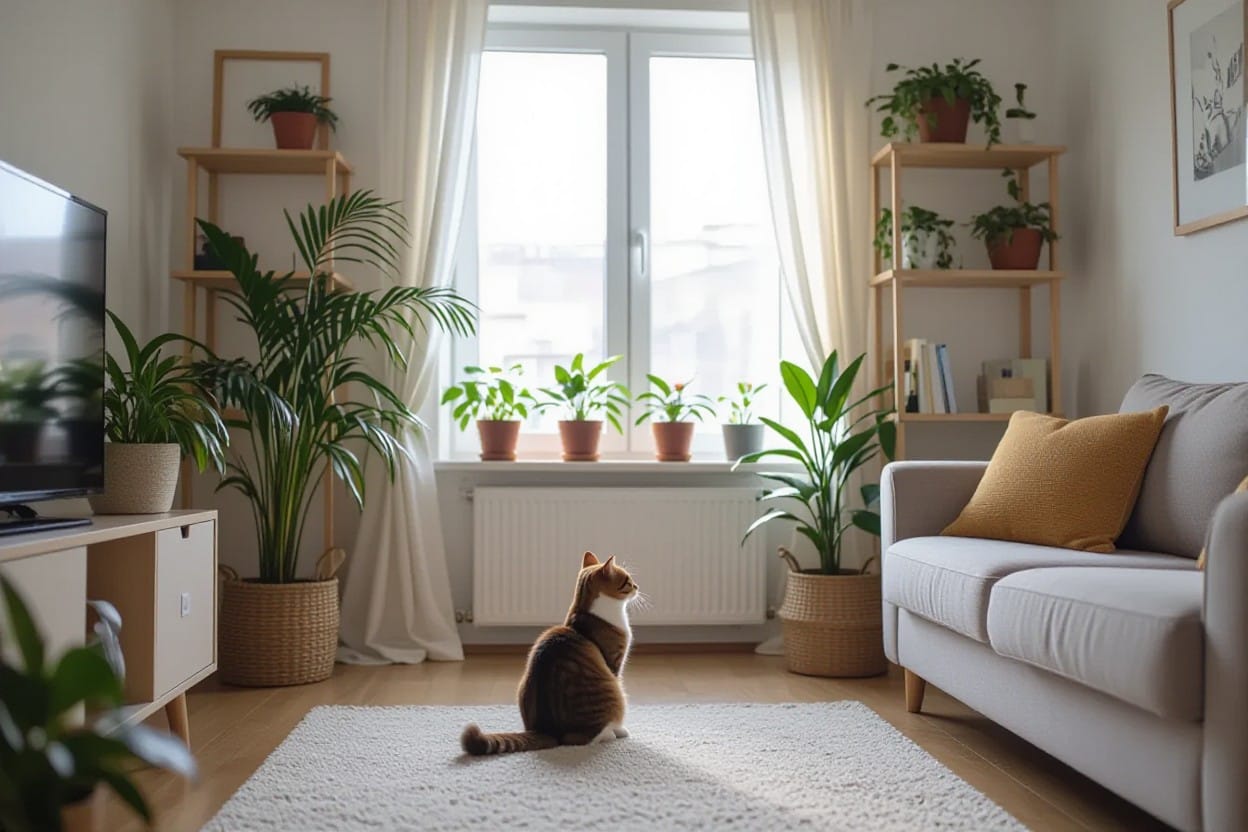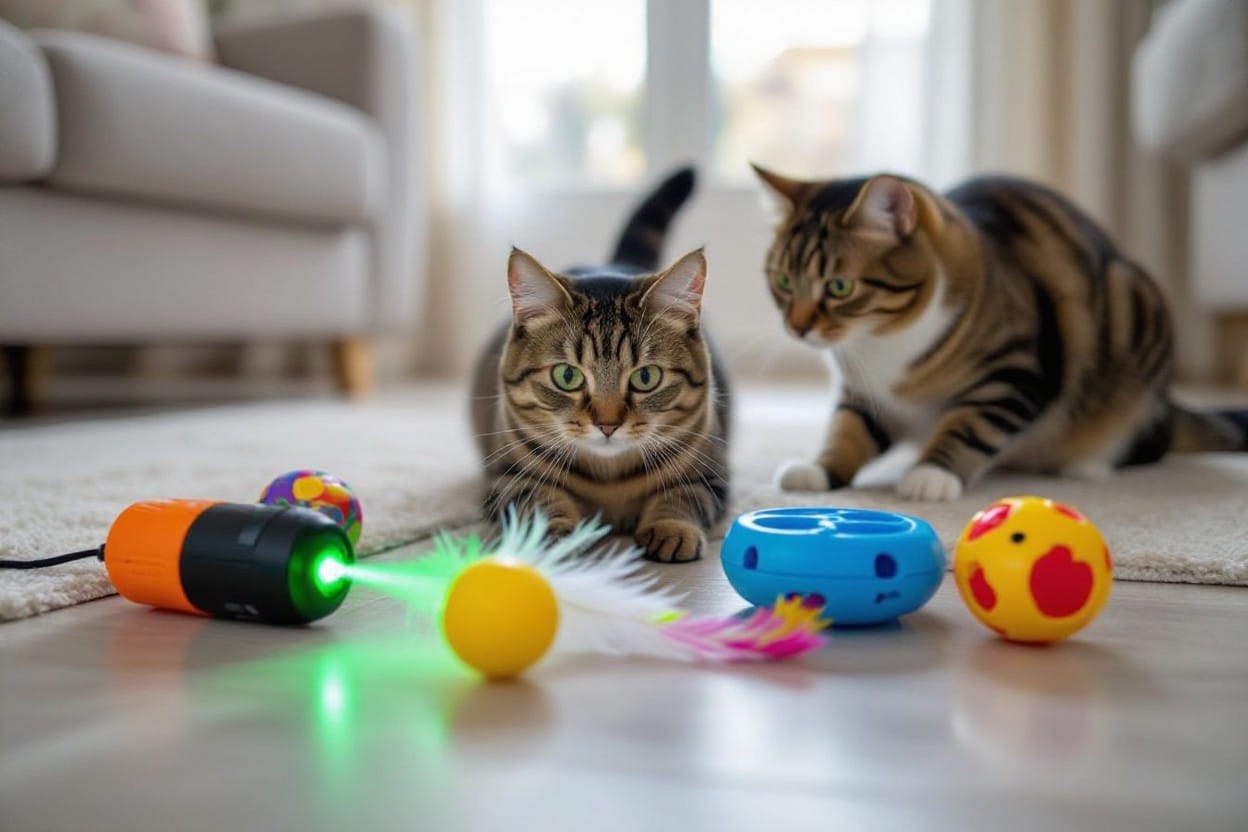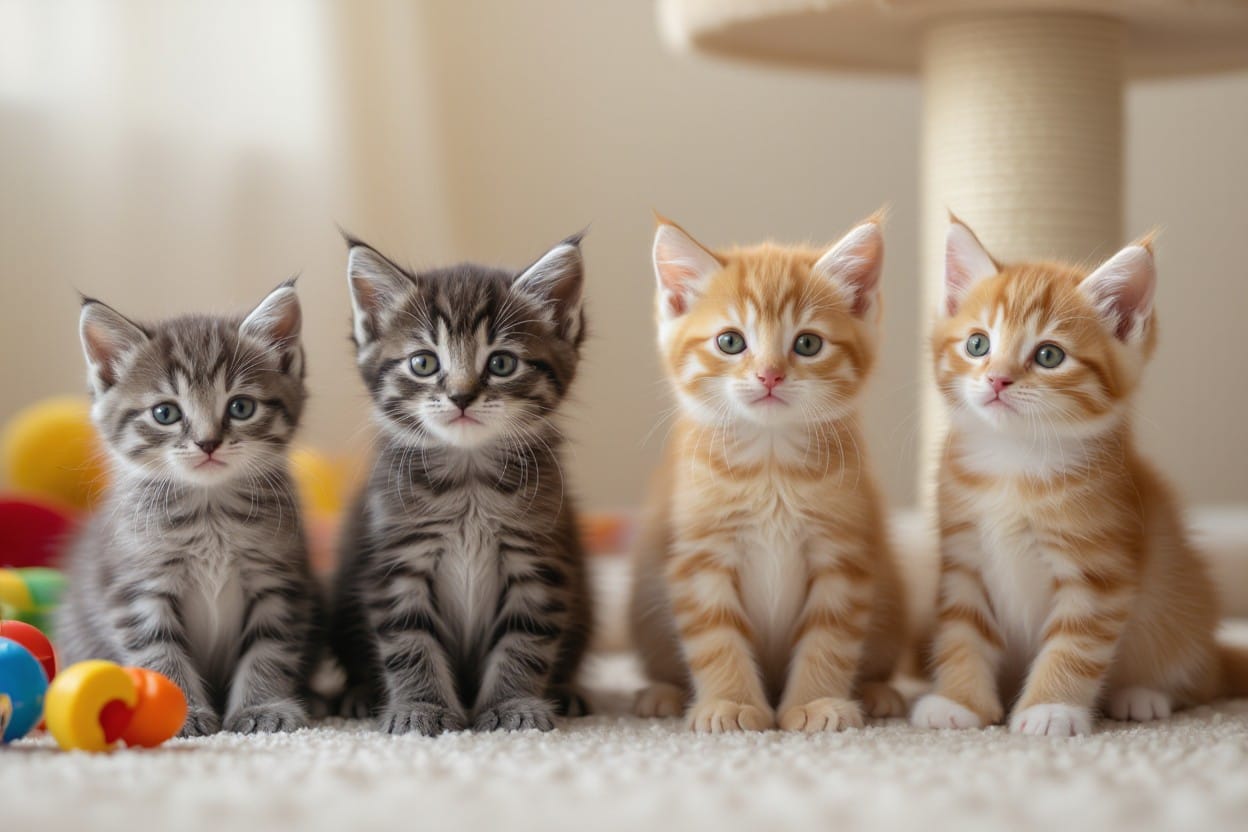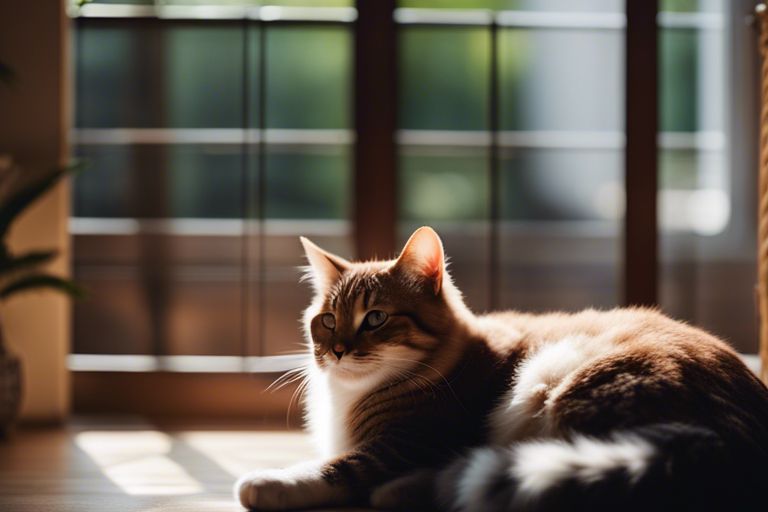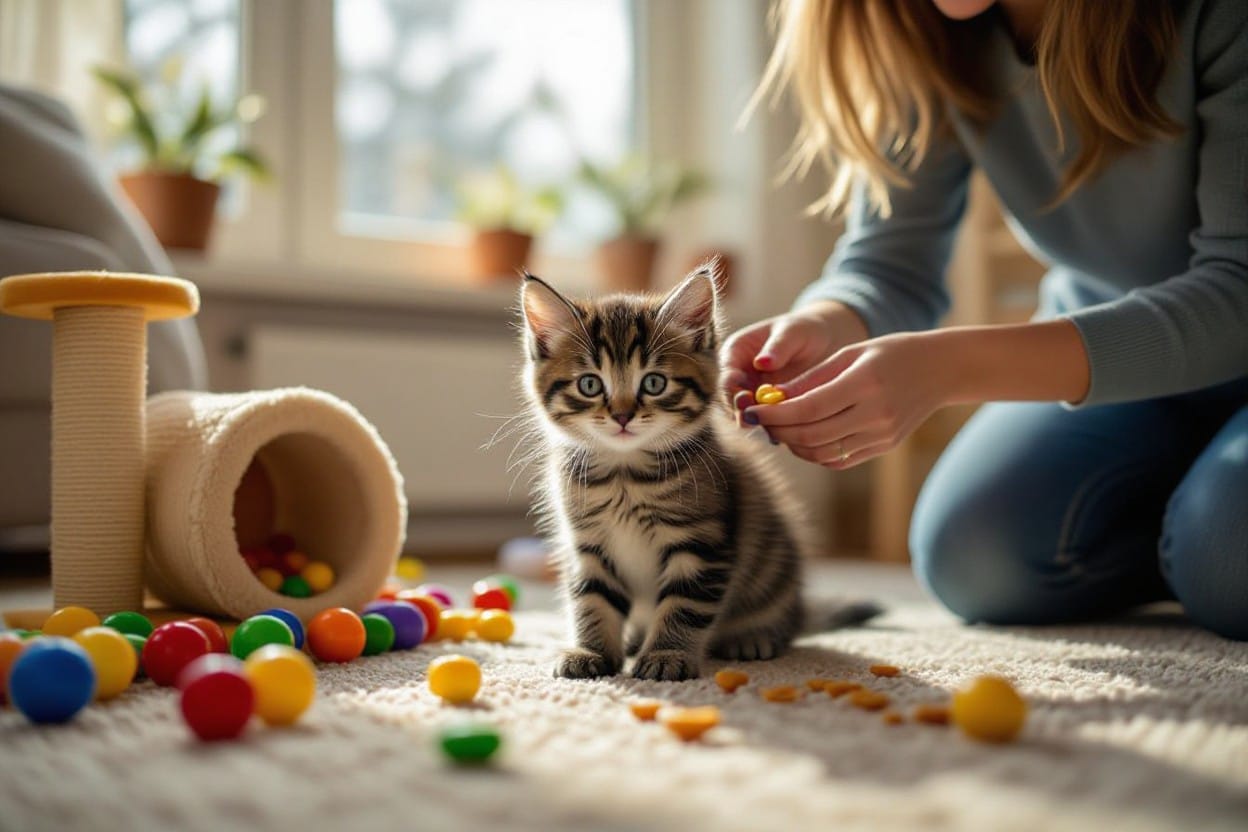Feline fur babies are beloved members of many households, and ensuring their safety and well-being is of utmost importance to their owners. Creating a safe indoor environment for your feline companions involves being mindful of potential hazards and taking proactive steps to prevent accidents or injuries.
From toxic plants and small objects that can be ingested to open windows and electrical cords that pose risks, there are various factors to consider when cat-proofing your space. By implementing simple yet effective measures, you can provide a secure and comfortable living environment for your furry friends to thrive in.
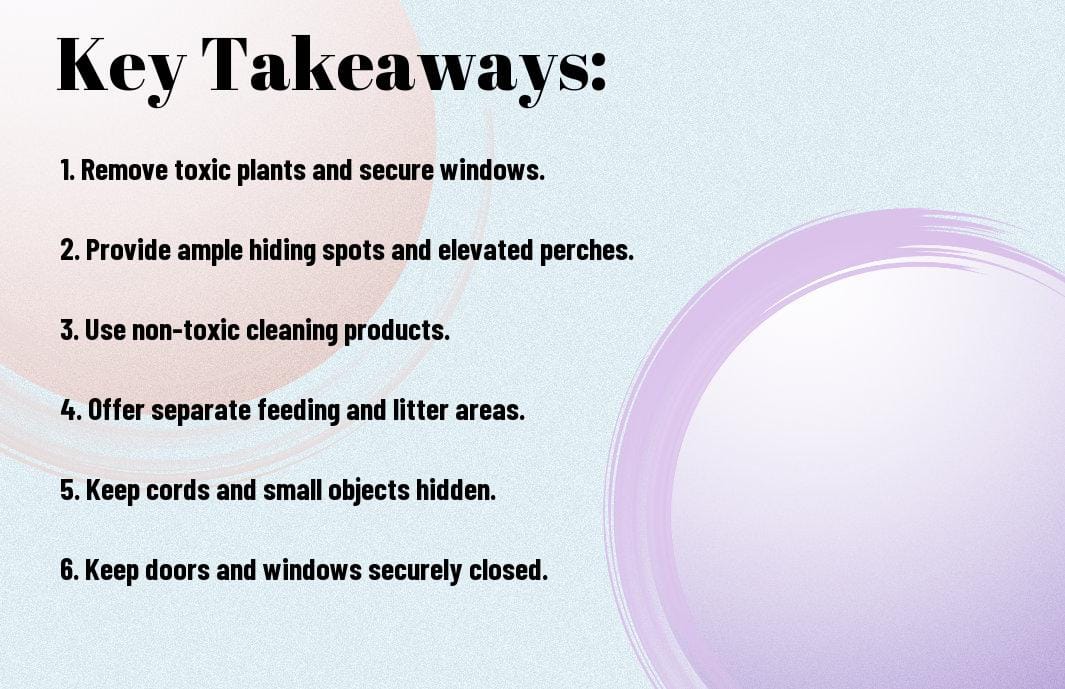
Basics of Cat Safety Indoors
Little do we realize that our homes, designed for human comfort, can pose numerous hazards to our feline friends. Understanding the basics of cat safety indoors is important to provide a secure environment for your beloved pets.
Eliminating Physical Hazards
Indoors, it’s crucial to identify and eliminate physical hazards that could potentially harm your cat. Keep small objects such as paper clips, rubber bands, or sewing needles out of reach to prevent choking or accidental ingestion. Secure electrical cords to prevent your cat from chewing on them and getting electric shocks. Hide toxic plants such as lilies, poinsettias, or philodendrons, which can be harmful if ingested by your curious feline friend.
Household Items Toxic to Cats
With cats being naturally curious creatures, they may investigate household items that could be toxic to them. Common household items such as certain important oils, antifreeze, medications like ibuprofen, and cleaning products can be extremely harmful to cats if ingested. It’s important to store these items securely in cabinets or high shelves that are inaccessible to your pets. Always check with your veterinarian before using any new product in your home to ensure it is safe for your feline companions.
Hazards to your cat can lurk in unexpected places within your home. By being proactive in identifying and eliminating potential dangers, you can create a safe indoor environment for your feline fur babies to thrive in.
The Essential Cat-Proofing Checklist
Kitchen Safety Measures
One of the first areas to cat-proof in your home is the kitchen. Cats are naturally curious creatures and may be attracted to the smells and sights of food preparation. To ensure your feline friend’s safety, keep all food items securely stored in cabinets or containers that your cat cannot access. Be mindful of leaving out any small objects or food items that could be a choking hazard.
Additionally, be cautious with kitchen appliances such as stovetops, ovens, and blenders that may pose a risk to your cat. Make sure to check for any hiding spots where your cat could potentially get trapped or injured while exploring the kitchen.
Bathroom and Laundry Room Precautions
Essential to cat-proofing your home is ensuring the safety of your furry companion in the bathroom and laundry room. Keep all cleaning products, medications, and toiletries securely stored in cabinets out of reach of your cat. Cats are known to be curious and may accidentally ingest harmful substances if left within their reach.
Living Area Dangers
A cat’s living area should be a sanctuary where they can roam and play without any hazards. To cat-proof your living area, secure all windows and balconies to prevent any falls or escape attempts by your cat. Remove any small objects that could be swallowed or pose a choking hazard, and ensure that all electrical cords are safely tucked away to prevent any injuries or potential chewing.
Essential Living Area Dangers
It’s vital to create a safe living environment for your cat by removing any poisonous plants and toxic substances that they may come into contact with. Ensure that all furniture is stable and cannot tip over easily, and provide your cat with their own designated scratching posts to prevent them from damaging household items.
Kitchen

Creating a Stimulating Indoor Environment
Importance of Enrichment for Indoor Cats
On a daily basis, indoor cats are faced with limited physical and mental stimulation compared to their outdoor counterparts. This can lead to boredom, stress, and even behavioral issues in our feline friends. Providing enrichment opportunities is crucial to keep your cat engaged, happy, and healthy.
DIY Cat Toys and Games
An effective way to provide enrichment for your indoor cat is through DIY cat toys and games. These can be made using simple household items like cardboard boxes, paper bags, and feathers. Interactive toys like puzzle feeders and fishing rod toys can also engage your cat’s natural hunting instincts and provide mental stimulation.
With a little creativity and research, you can create a variety of engaging toys and games for your cat to enjoy. Not only will these homemade items save you money, but they will also strengthen the bond between you and your furry friend.
Choosing the Right Cat Tree and Scratching Posts
For indoor cats, having the right cat tree and scratching posts is crucial for their physical and mental well-being. Cat trees provide vertical space for climbing, jumping, and surveying their surroundings, while scratching posts help cats satisfy their natural urge to scratch and stretch.
It is important to choose a cat tree that is sturdy and tall enough to accommodate your cat’s need for climbing. Scratching posts should be made of materials like sisal rope or cardboard to entice your cat to scratch them instead of your furniture. Placing these items in various locations around your home can also encourage your cat to explore and play.
The Benefits of Safe Outdoor Access
Not only do cats love spending time outdoors, but it also provides them with mental stimulation, exercise, and a sense of freedom. Safe outdoor access allows your feline companions to explore their natural instincts such as climbing, hunting, and sunbathing. This can lead to a healthier, happier cat overall.
Transitioning to a Catio or Enclosed Space
Any transition to outdoor access should be done gradually to ensure the safety and well-being of your cats. A catio or enclosed space is a great way to provide outdoor access while maintaining a controlled environment. Start by introducing your cats to the catio for short periods of time and gradually increase their exposure. This will help them acclimate to the new space and reduce any stress or anxiety they may experience.
Balancing Safety with Outdoor Exploration
On the one hand, outdoor exploration is important for cats to satisfy their natural instincts and provide mental and physical stimulation. However, it is crucial to balance this with ensuring their safety. Outdoor spaces can pose various risks such as traffic accidents, predatory animals, and exposure to toxic plants. By providing a safe and secure outdoor environment, such as a catio or enclosed space, you can allow your feline friends to enjoy the outdoors without exposing them to potential dangers.
Exploration is crucial for cats, but as responsible pet owners, it is our duty to create a safe environment that enables them to explore without putting their well-being at risk. With the right precautions in place, you can give your feline companions the best of both worlds – the thrill of outdoor exploration and the safety of a controlled environment.
Nutrition and Hydration
Feeding Your Cat a Balanced Diet
The key to keeping your feline companion healthy and happy is providing them with a balanced diet. Cats are obligate carnivores, which means they require a diet rich in animal-based proteins. Unlike dogs, cats cannot thrive on a vegetarian or vegan diet. It’s vital to feed your cat high-quality commercial cat food that is specifically formulated to meet their nutritional needs.
When choosing cat food, look for options that list a source of animal protein as the first ingredient. Avoid products that contain excessive fillers, artificial colors, or by-products. While it may be tempting to prepare homemade meals for your cat, it’s best to consult with a veterinarian or feline nutritionist to ensure that your cat is getting all the necessary nutrients.
Ensuring Access to Fresh Water at All Times
To maintain good health, cats need constant access to fresh, clean water. Dehydration can lead to serious health issues like urinary tract problems and kidney disease. Ensure that your cat always has access to a clean water source, preferably in a separate bowl away from their food. Cats are often sensitive to the taste and temperature of water, so consider offering both still and running water options to encourage drinking.
To encourage your cat to drink more water, you can try using a cat fountain or adding a splash of tuna juice to their water bowl. Monitor your cat’s water intake to ensure they are staying adequately hydrated, especially during hot weather or if they are on a dry food diet. If you notice any changes in your cat’s water consumption, consult with your veterinarian to rule out any underlying health issues.
Hydration
Hydration is vital for maintaining your cat’s overall health and well-being. Cats have a low thirst drive, so it’s crucial to provide them with easy access to water throughout the day. In addition to their regular water bowl, you can introduce wet food into their diet to increase their water intake. Proper hydration will help prevent urinary tract infections and promote healthy kidney function in your feline friend.
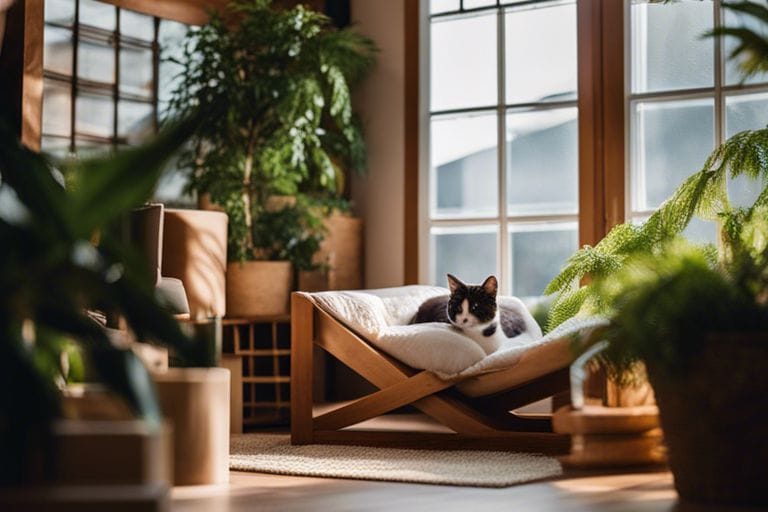
Health and Hygiene
Regular Vet Checkups and Vaccinations
The health of your feline companion is of utmost importance. Regular vet checkups and vaccinations play a crucial role in maintaining their well-being. The first step in ensuring a safe indoor environment for your cat is to establish a relationship with a trusted veterinarian who can provide comprehensive care. Your vet will recommend a vaccination schedule tailored to your cat’s specific needs, helping to protect them from common feline diseases.
Litter Box Placement and Maintenance
Health experts recommend placing litter boxes in quiet, easily accessible areas to promote regular use. Proper maintenance of the litter box is imperative to prevent odor and bacteria buildup. Cats are known for their cleanliness, and a dirty litter box can lead to stress and even health issues for your furry friend. Scoop the box daily and change the litter regularly to ensure a fresh and hygienic environment for your cat.
Training and Behavior
Setting Boundaries in the Home
Any responsible cat owner knows that setting boundaries in the home is important to creating a safe and harmonious environment for their feline friends. Cats are naturally curious and adventurous creatures, so it’s important to establish certain areas that are off-limits. Avoid places like kitchen counters, dining tables, or any areas where your cat’s presence might be a nuisance or potentially dangerous. Consistency is key when it comes to enforcing these boundaries. Use gentle but firm corrections, such as redirecting your cat to a designated scratching post or play area.
Addressing Destructive Behavior
With the right training and attention, most destructive behaviors in cats can be addressed effectively. Common destructive behaviors in cats include scratching furniture, chewing on cords, or excessive meowing. It’s crucial to understand that these behaviors are often a result of boredom, stress, or lack of stimulation. Addressing destructive behavior starts with providing plenty of interactive toys, scratching posts, and vertical spaces for your cat to climb and explore. It’s also important to schedule regular playtime and enrichment activities to keep your cat mentally and physically stimulated.
It’s important to avoid punishment-based training methods, as they can lead to fear and anxiety in your cat. Instead, focus on positive reinforcement by rewarding good behavior with treats or praise. If destructive behavior persists, consider consulting with a professional cat behaviorist to develop a customized training plan tailored to your cat’s specific needs.
Conclusion
So, creating a safe indoor environment for your feline fur babies is imperative for their well-being and overall health. By following the tips and guidelines mentioned, you can ensure that your indoor space is conducive to your cat’s needs, instincts, and behaviors. From providing enough vertical spaces for climbing and perching to offering interactive toys and scratch posts, there are various ways to create a stimulating and safe environment for your furry friends.
Keep in mind, cats are curious and playful creatures that require mental and physical stimulation to thrive. Investing time and effort into making your indoor space cat-friendly will not only enhance their quality of life but also strengthen the bond between you and your beloved feline companion. By prioritizing their safety and well-being, you can create a harmonious and enriching living environment for your cats to enjoy for years to come.
FAQ
Q: Why is it important to create a safe indoor environment for my feline fur baby?
A: Creating a safe indoor environment for your cat is crucial to ensure their well-being and prevent any potential accidents or dangers.
Q: How can I make my home safe for my cat?
A: You can make your home safe for your cat by eliminating toxic plants, securing windows and balconies, removing small objects that can be swallowed, and providing safe hiding spots.
Q: What are some common household items that can be toxic to cats?
A: Common household items that can be toxic to cats include certain plants like lilies, imperative oils, human medications, and foods like chocolate, grapes, and onions.
Q: How can I create a cat-friendly space in my home?
A: You can create a cat-friendly space in your home by providing scratching posts, climbing structures, comfortable resting areas, interactive toys, and access to windows for bird-watching.
Q: What are some signs that my cat is not feeling safe in its indoor environment?
A: Signs that your cat is not feeling safe in its indoor environment include hiding more than usual, excessive grooming, decreased appetite, and aggressive behavior. It’s important to address these signs promptly to ensure your cat’s well-being.
